A Beginner's Guide to Using Spices in Indian Cooking
By Conchita de Souza
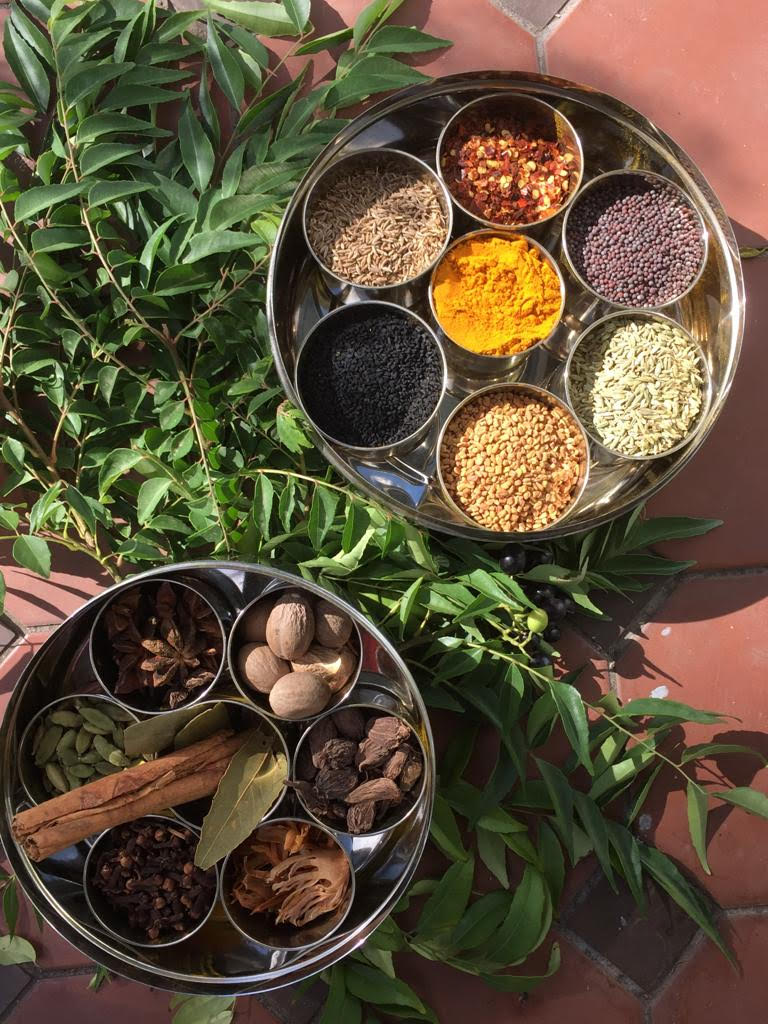
By Conchita de Souza

By Conchita de Souza
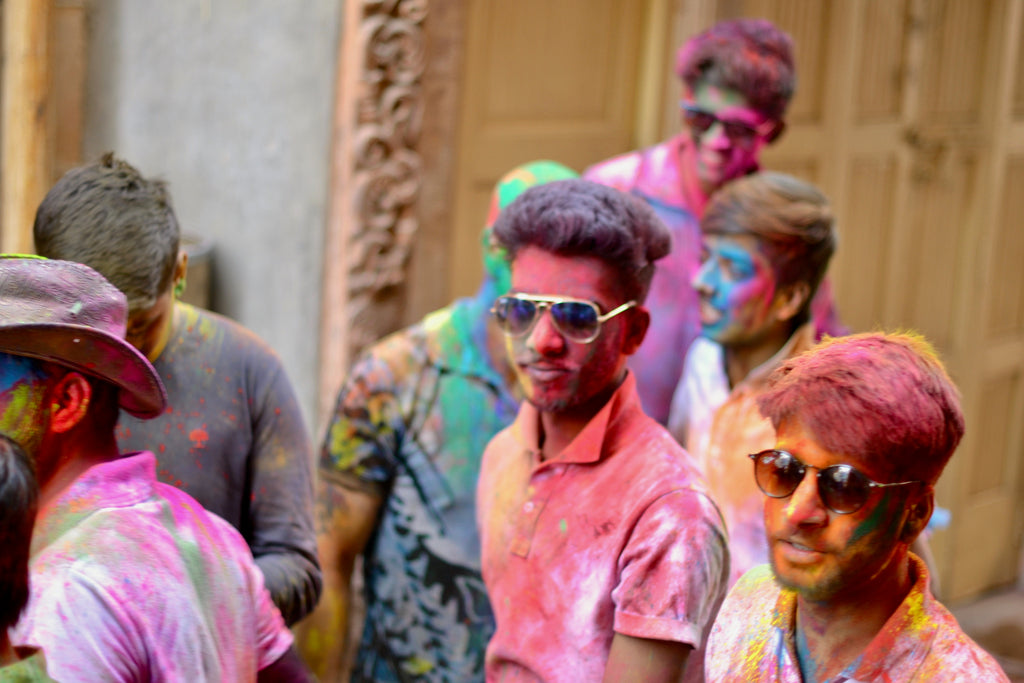
By Claudette D'Cruz
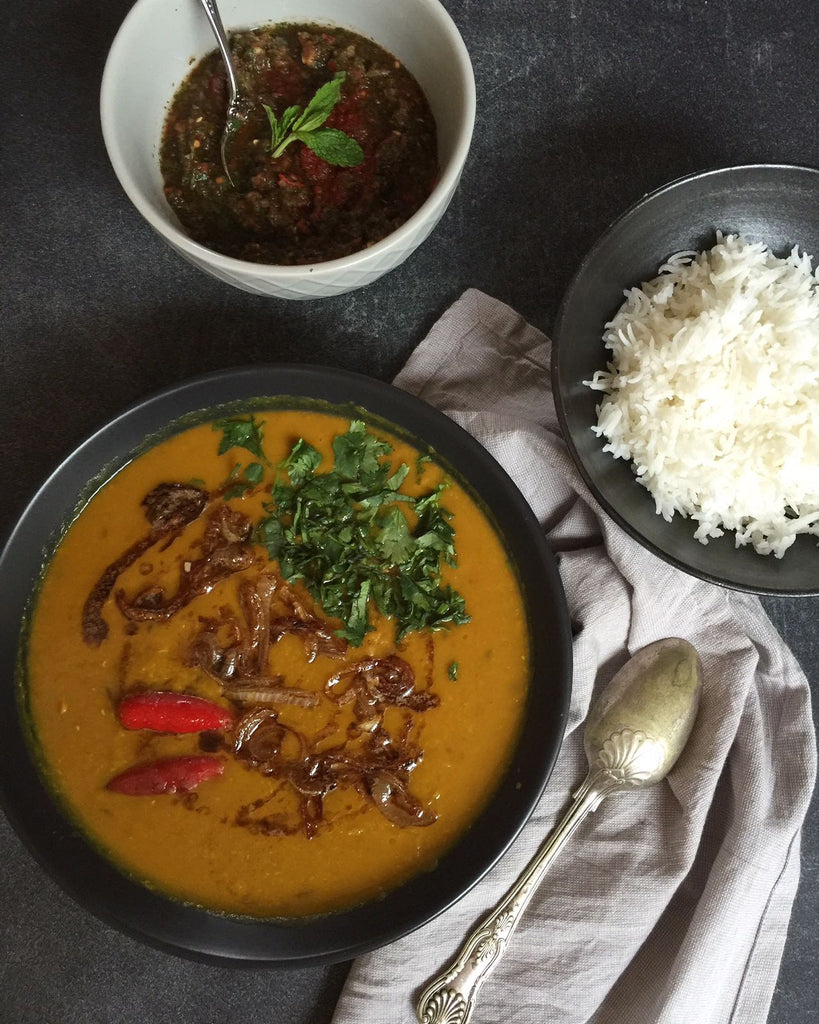
With today’s mantra of eat more plant food we see posh fruit and juice parlours sprouting around. Instagram is lush with tantalising pictures of luscious fruit and vibrant vegetables arranged in all manner of aesthetics by raw food enthusiasts. But fruit and vegetables are not the only plant food we can enjoy. Let’s take a look at what replaces a steak on an Indian plate - pulses.
With 47% of Indians following a vegetarian (lacto-ovo) diet there are a whole variety of pulses included in every meal. They are cheap but provide high nutrition and the protein component in meals for millions. Pulses are eaten at each meal both in sweet and savoury recipes. In many Indian households lunch or dinner would consist of a dhal, a bean dish, 2 seasonal vegetables, rice and or chappati accompanied by pickle, papadums and a sweet dish.
Dhal for most Indians is synonymous with soul food. A hot steaming bowl of dhal and some rice/roti to accompany it and you have a satisfying meal in minutes. There are several varieties of Dhals and we will endeavour to explain some of them.
The six major pulse groups grown in Australia are: Broad Beans, Chickpea, Field Peas, Lentils, Lupin and Mungbean. Pulses are universally recommended as part of a healthy eating plan and feature prominently in some of the world’s healthiest diets such as the Mediterranean diet. So feel positively pulsed and enjoy these easy recipes, which we have hyperlinked below:
By Conchita de Souza
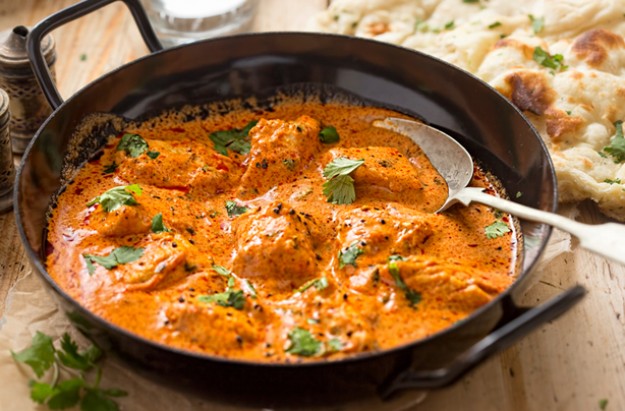
My hypothesis is that any dish which contains the ingredient ‘butter’ in its name will certainly not disappoint: Butterbeer (hello wizarding fans); Peanut Butter (or any of its nutty counterparts); Butterscotch (especially if we are talking about chunks of it in my ice-cream) and Butter Chicken (best enjoyed when served with warm naan).
I have long been a believer in the fact that the amount of butter used in a recipe can only ever be greater than or equal to the amount of love the cook has for those whom she is preparing the dish. It is no surprise then, that Butter Chicken has won hearts and tastebuds throughout the world because of the generous lashings of butter perfectly dissolved into a thick tomatoey gravy that has absorbed the sultry spices of the tandoor-roasted chicken. The dish takes you on a rollercoaster of sensations with every bite; it is mildly spicy, with a hit of sweetness from the tomato base; the mix of butter and yoghurt makes it creamy and; the juices of the spiced chicken give it a tangy touch.
The humble origins of this dish can be traced back to a talented young chef named Kundan Lal Gujral (who had already been credited for inventing Tandoori Chicken and would later go on to create the renowned Dhal Makhani). He had fled to Delhi from Pakistan following the partition and started a restaurant called Moti Mahal. Chef Kundan saw that the tandoori chicken skewers which did not get sold during the day, would go to waste, and so he thought of cooking that same chicken in a sauce to soften it. That sauce was the sauce that propelled this culinary genius into legendary fame and has kept his soul alive through the makers and eaters of Butter Chicken.
My first exposure to this dish came from my Dad, a trained chef and lover of Indian cuisine. His Butter Chicken is renowned amongst our circle of family and friends and it is a dish he always prepares whenever we entertain at home. Although we do not have access to the traditional Indian tandoor (a cylindrical clay oven), he uses our very modern oven to bake the chicken which has been marinated in yoghurt and a blend of spices overnight. My friends like his preparation because he masters the balance between spices and buttery-ness. Sometimes you can order a Butter Chicken that is so opulent that it fills you up and leaves you with an unsettling heaviness in your tummy; Other times the dish can be watered down and resultantly lacks ‘oomph’. Fine tuning your Butter Chicken can be as tricky as doing salsa blindfolded and on a beam - there are so many different elements that require balancing.
Fortunately for you, we have taken the guesswork out of making Butter Chicken (and other favourites). Our authentic, naturally-blended, gluten-free and preservative-free Butter Chicken spice blend will have your family and guests loosening the belts on their pants to make space for another helping (or two) whilst raising their eyebrows quizzically at your unassumed ability to produce an authentic-tasting Indian curry. And because the love for you all is real, we have added a foolproof recipe to prepare this dish with relative ease and certainly hardly any fuss. For vegetarians and vegans - add paneer (Indian cottage cheese) or tofu respectively to make a delightful meat-free version of this dish. Click here for your life-changing Butter Chicken spice blend.
If you are a nutter for butter and want to test out my hypothesis above, then you should most definitely taste our Dhal Makhani (Buttery Dhal) spice blend. ‘Makhan’ means ‘butter’ in Hindi and its addition to this lentil-based dish transforms it from an ‘everyday’ kind-of meal into one fit for royalty. Because everything tastes better with butter.
By Conchita A. de Souza
PC: http://goodtoknow.media.ipcdigital.co.uk/
By Conchita de Souza
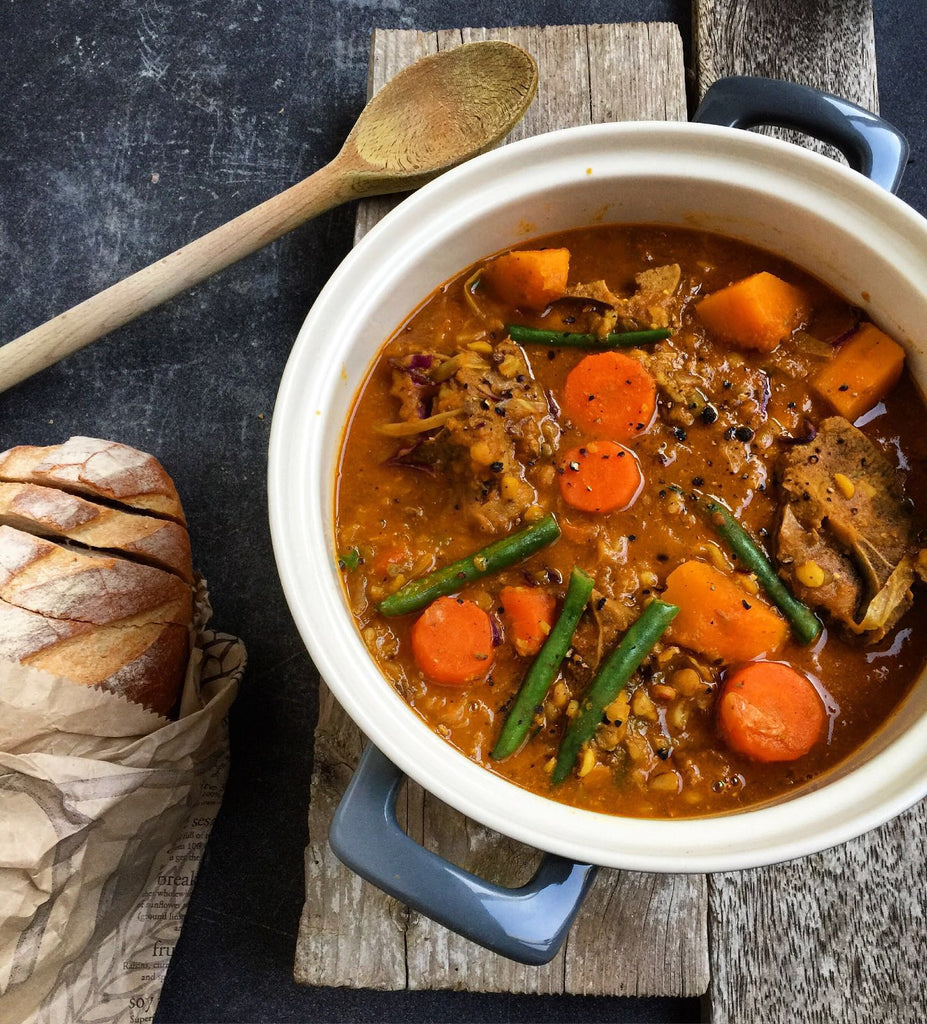
There is nothing like coming home after a long period of travelling and eating out at restaurants, in trains and on the street, and finally tucking into a meal prepared in your very own kitchen. Even if that meal is as simple as you toasting bread, spreading vegemite and butter on top of it and sitting half naked on the kitchen counter munching on the said creation.
In India, the notion of a home-cooked meal concocts sensations of familiarity, comfort, belonging and security. Whilst there is a huge culture of eating out at the literally millions of places, be they grand as the Taj Hotel or as humble as the pani puri vendor at the end of the street (click here and here to learn more about the deliciousness that is pani puri), there is also an unsaid recognition and appreciation for the meal that is prepared at home, with love and tenderness, usually (but not always, as things are changing) by the mother. This meal is sacred and wasting it, a big sin.
A common sight in India is bringing home-made ‘tiffins’ to work. ‘Tiffin’ means lunch and, until I lived and worked in India, I can honestly say I never really had a proper ‘lunch’. In Australia, it is common for us to bring sandwiches or something cold for lunch packed from home. Every now and then leftovers that can be heated up, is more of a treat than the ordinary salad sandwich. In India, home-packed tiffins are taken to new heights with spicily-prepared vegetables and hot, soft roti made at home in the morning and packed just in time for hubby, kids and self to take to school and work. Can you imagine waking up early enough to not only prepare breakfast for the family, but also hot lunch, and then get them and yourself ready to be out of the house? Well it happens, and all for the love of a home-cooked meal.
I remember when I first started working in India and it was my first office lunch, I went to the canteen to order food whilst my colleagues accompanied me with stylish and compact bags. Whilst I waited for my food to be prepared, they opened their bags to reveal an assortment of tiffin boxes, some stainless steel and multi-stacked (like in the image below) and others colourful, like the tupperware they sell at tupperware parties in Australia. Each box was carefully packed; rice separated from curry; cooked vegetable separated from roti; a special container to make sure the home-made yoghurt wouldn’t leak and; even a small box with a homemade sweet. All of these tiffins would be spread out amongst colleagues and graciously shared, each colleague boasting about their mum’s amazing pilaf or their wife’s to-die-for jeera aloo (potato and cumin seeds). On a day your mum prepared a dish that was not one of your favourites; no problems, it was easily exchanged with a colleague who liked what you got in your tiffin and vice versa. I felt out of place with my canteen food but within no time, the tiffins were pushed to my side of the table and I was asked to taste everything. After a few weeks of settling in, I too began cooking fresh food in the morning and taking it to work in my tiffin (not as stylish as theirs but nevertheless serving its purpose) and feeling the joy of opening up my tiffin and sharing my cooking efforts with those around me. There is something about homemade food that makes it taste different, and I put that down to one ingredient - love. You wouldn’t prepare meals for your loved ones with outdated ingredients, wilting leafy vegetables or unfamiliar additives. You take pleasure in seeing them enjoy that which you have made and therein lies the love. Not to my surprise, when I have prepared food in anger, or eaten food prepared in anger, this has reflected in the taste which says a lot about the importance of food preparation!

A tradition that remains strong in India is the notion of cooking fresh and eating fresh. I have friends who refuse to eat food for dinner that was prepared in the morning. ‘But it’s stale’ they argue as I guiltily think of eating curries back home that my dad prepared a week in advance (in my defence, certain curries become tastier days after they are prepared). Before the advent of fridges, freezers and microwaves, food was consumed soon after it was prepared and so this practice continues on in many modern and traditional homes across India. If families do not have the time, they hire a cook to prepare food in their home. Such is the importance placed on the home-cooked meal.
Whilst I can appreciate that eating fresh at every meal is not practical for most, I definitely believe we can prepare homemade meals more often and with greater variety, leaving restaurants and take-out for celebrations, special occasions and those days where cooking anything at all requires levels of energy we cannot muster. That’s where we at No Worries Curries come in. Indian and Asian cooking can be daunting to someone who loves the flavours but is not familiar with the methods and the delicate balance of multiple spices. We take the ‘worry’ out of making curry and provide you with authentically blended spices to create your very own Indian feast from the comfort of your kitchen (with recipes on the back of each blend because the love is real for you dear friends). The most empowering factor is that you are in control. If you like it hot, then add more chilli. If you want a vegetarian version, replace proteins with ingredients like tofu or kidney beans. Our range of spices allows you flexibility in flavour, ingredients and quantity.
Why trust us? We have grown up entirely on spices and we know just how nourishing they are when regularly consumed. We also believe in the power of homemade meals and want you to be able to do the same, even if you are preparing a dish from a place that seems foreign but whose flavours and textures have won your heart (read - tastebuds). Here’s to homemade food - that it may always replenish us with the love we all deserve and that we may savour it more often than our busy lives permit!
Inserted image: http://www.saurabhsteel.com/tiffin-carrier/clip-belly/53
By Conchita A. de Souza
By Claudette D'Cruz
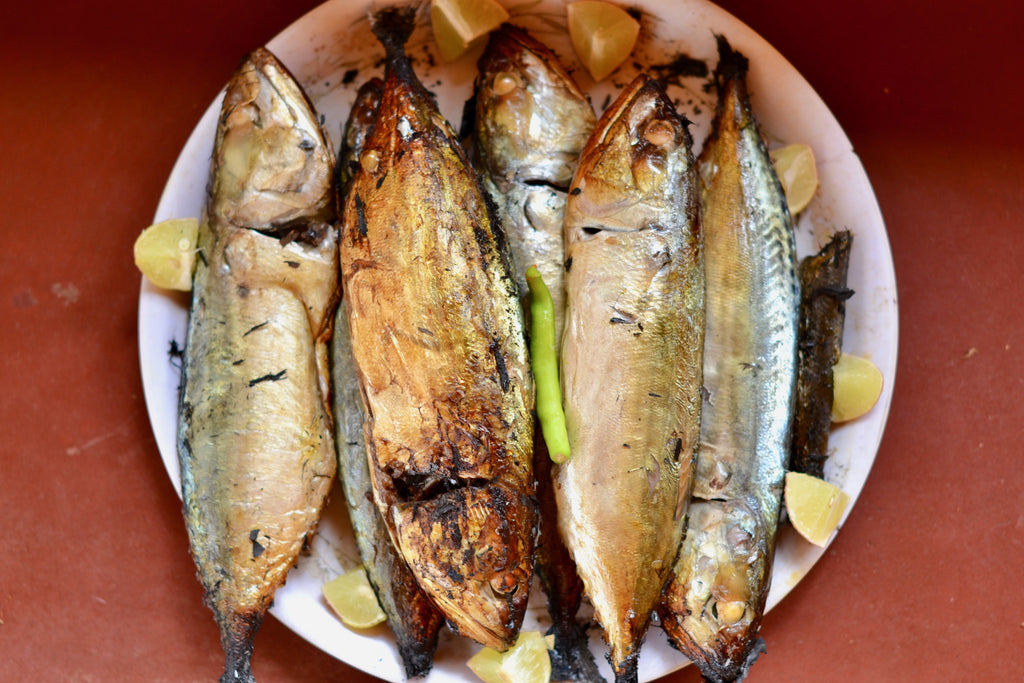
There is nothing quite like the overpowering sensation of ‘belonging’ that hits me as soon as my train arrives into Karmali, a small, picturesque railway station located in the north of Goa. The earth is coloured a dusty kind of rouge, the sun beats down hard and the palms of the endless coconut trees delicately intrude upon the blue skyline. Although I call Sydney home, Goa is my home away from home. That overwhelming sense of ‘belonging’ which I earlier mentioned arises from the simple fact that Goa is too, the land of my ancestors. My mind wanders to how life was a struggle back in the old times - no electricity, no technology to keep them entertained, no thermomixes and ultra-cool blenders to make nice cream and smoothies. Despite the lack of all these ‘necessities’, I believe they probably led much more fulfilling, albeit humble lives, than I ever could. The food was probably far tastier and fresher and free from the corruption of preservatives and pesticides. People would actually communicate with each other rather than hiding behind a screen. Honest and physical labour in the homes and fields would keep them fit, rather than the shallow obsession we sometimes have with exercise as a means to fulfil society’s high standards of aesthetics. It is a world we may never know.
I would be caught lying if I said I return to Goa regularly for the sole purpose of meeting and spending time with my family. Whilst they are an important reason for returning home, it is in fact the delights of Goan cuisine that keeps me coming back time after time. I must give particular mention to my Aunty’s cooking, which will feature as the central focus of this post. Here are some of my favourite dishes that she lovingly prepared for me on my recent trip that elated my soul (in no particular order).
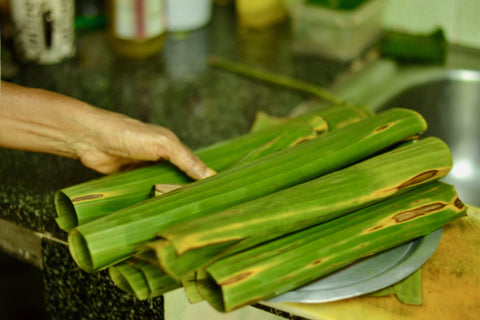
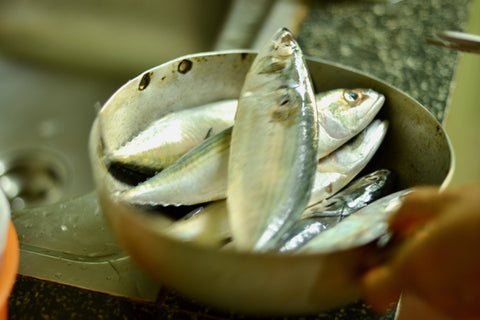
I should also comment on the fact that I travelled to Goa in May - which is literally the hottest and most humid month of the year. It’s when your sweat sweats, when showering thrice a day is acceptable and when lethargy and languidity are the only ways in which your body rolls. However all is forgiven because it also happens to be the period during which two of my favourite fruits are in season - Mango (specifically Goa’s favourite mango - The Mankurad) and Jackfruit. Now I could write an entire blog on just how much I love these two fruits and I how I consumed them in the kilos during my stay in Goa but I won’t. However, if you happen to be in Goa during the month of May, you’ve been briefed - Mango and Jackfruit will sustain your soul too.
My Aunty packed a multitude of goodies for me for my return trip (I told her it was a short flight, but she still packed a tiffin of beef roast paos [Goan bread rolls] and jackfruits to sweeten the mouth). There were Goan sweets, mangoes, more jackfruit, home-made pickles and she even squeezed in a container of cooked prawns and more roast. I realised at that moment my sense of belonging to Goa was inextricably linked with the comfort I feel when I eat her food, and the gratitude that envelopes me as both my tummy and soul experience contentment.
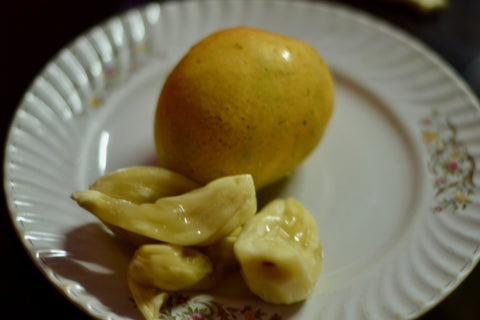
To create your own taste of Goa, which your guests will love you for, click here for a tasty Goan curry involving red meat, here for one involving chicken and here if you want to make an unforgettable Goan seafood curry.
By Conchita A. de Souza
By Claudette D'Cruz
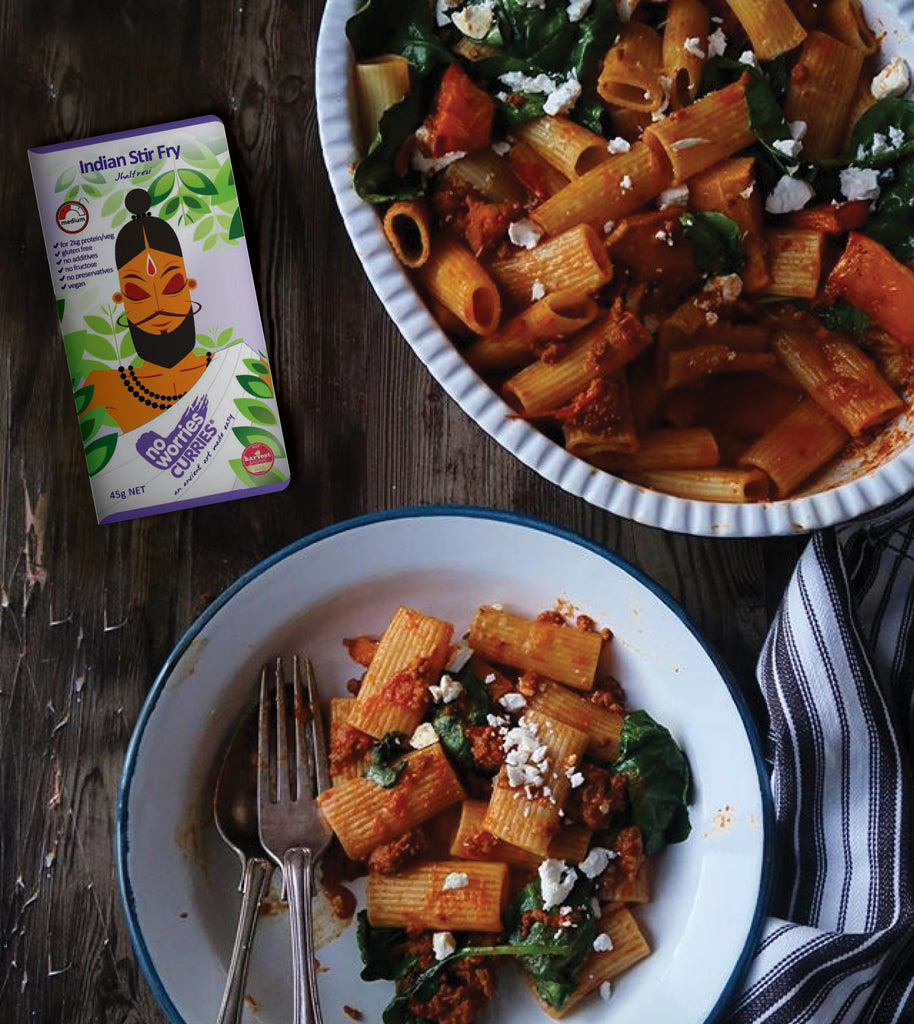
I hate to burst your bubble of pride as you tuck into your home-made curry, but your success is old news – ancient to be precise. Curry is believed to be the oldest continuously-prepared food in human history, and early home cooks were whipping up a good spicy stew around 4,000 years ago in the ancient Indus Valley empire of India.
Of course our early ancestor's curries little resemble modern-day curries. Even in the 17th century the Indian 'kari' was merely one of many soupy-spicy dressings served with other dishes and not as the main event. The Europeans, while merrily colonising India, incorrectly assumed all these dressings were 'currys' (as they called them), and scurried back to their home countries with a recipe.
But then everything changed. While the English were making “currey the Indian way” (a rabbit stew with a spoonful of rice and various spices), the chilli journeyed from it's native South America to Asia and the curry became the fiery version we know today.
That said, curry remains one of the most diverse and varied foods on the planet. Eat a curry in Jamaica and it will likely contain goat, while South African's chew on 'bunny chow' and the hawker stalls of Hong Kong sell curry fish balls.
In the Maldives the top curry is made with fresh tuna, Germany's classic currywurst pairs a sausage with curried ketchup to great effect, and the first Australian settlers dined on bandicoot curry in 1864.
It all started in India though, so to India we must return. Curries vary by region, tradition and religion in India, but the general rule is that southern Indian curries are the spicier ones, and coastal regions use seafood more than chicken or red meat.
Your average curry contains around 60 ingredients, but before you scream and vow you will never cook one again, remember that many of these contain health benefits, so are worth the effort of adding to your meal.
Key spices like turmeric, cumin, allspice, ginger and garlic have anti-bacterial properties; onions help the body produce cancer-fighting molecules; and the hotter the spice the more calories you burn eating it!
Ultimately, what really matters is the pleasure that a good curry brings: it's both soothing and stimulating, explosively flavoured and endlessly varied. Let that pleasure be heightened by the effort that goes into making it, and the link it creates with our ancestors and the global society of curry eaters. Throw in the fact that you are doing your body some good just by tucking in and there is no reason not to open your next packet of spices and get cooking!